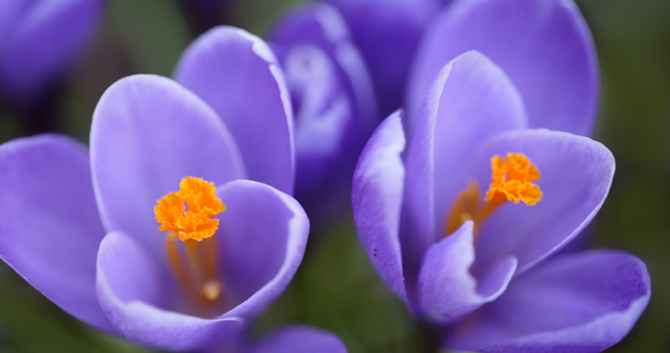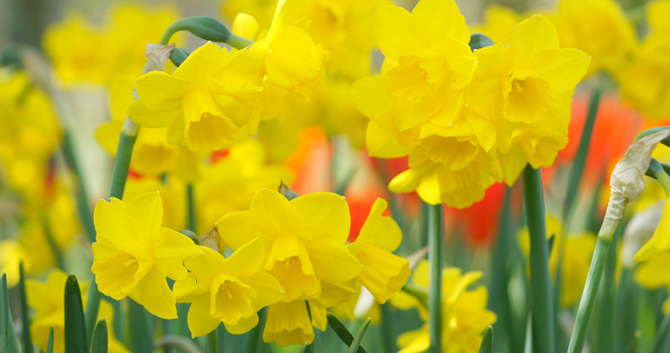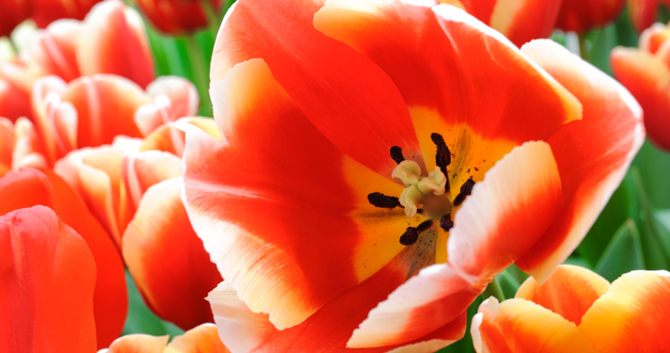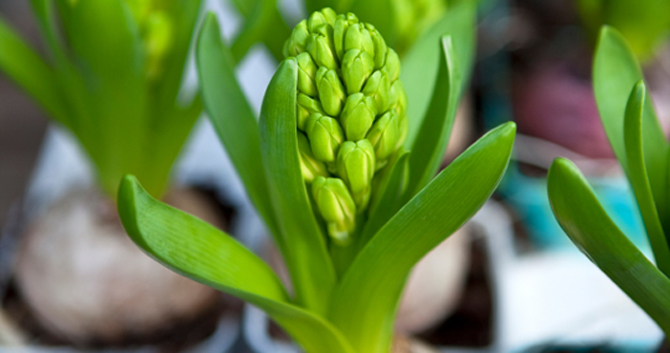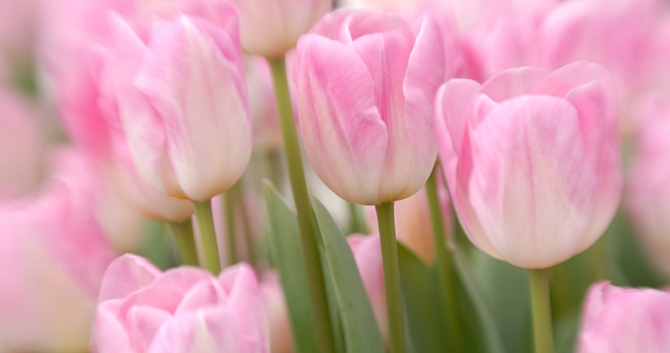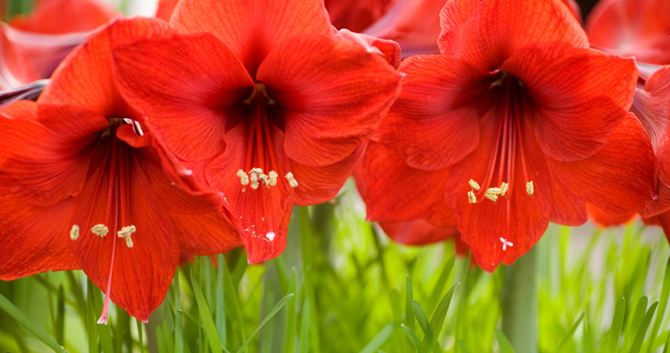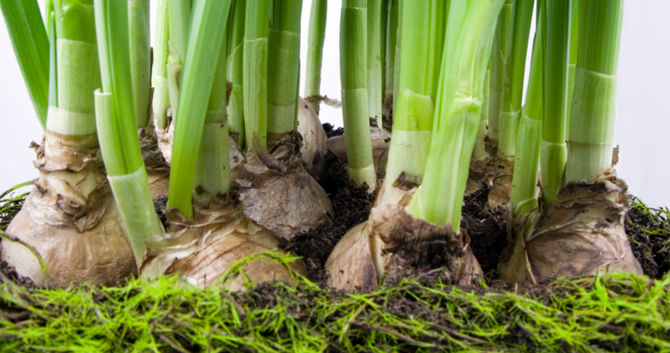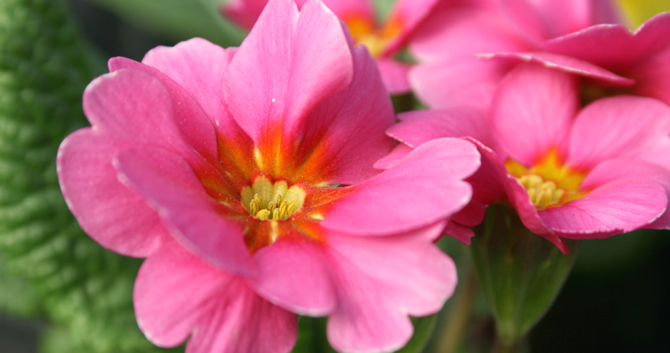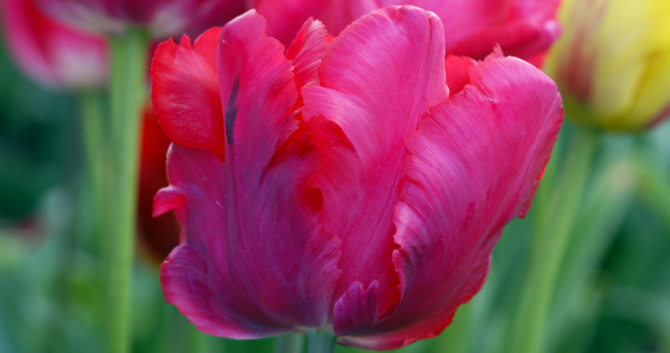Who doesn't love flowers? We delight in their blooms of every hue, their fragrances that perfume the air, and their irresistible charms that brighten the day. We miss them when the season ends and count the days until spring returns.
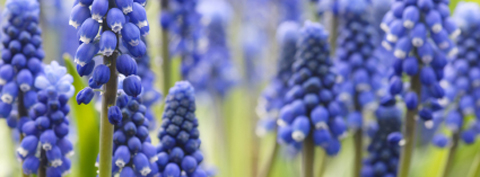 Grape hyacinth is a miniature bulb that pairs well with larger flowers.
Grape hyacinth is a miniature bulb that pairs well with larger flowers.
Resolving to wait patiently while our bulbs sleep soundly in the soil until a warm nudge from the sun reawakens them, we anticipate the day they emerge from the ground and come full circle.
Luckily there are growers hard at work waking up some of these bulbs early so you don’t have to wait for April showers to bring May flowers! You can have bright cheerful bulbs indoors all winter – amaryllis, crocus, daffodils, hyacinth, lilies, tulips, and Easter lilies – not to mention primrose which pairs perfectly with any spring bulb. This indulgence also pays dividends for years to come - once the blooms fade, many can be moved into the garden to bloom again the following year (see Sidebar for details).
Containers of forced bulbs bring a sense of optimism and renewal at any time of the year. They’re an everyday luxury that brings joy to winter days and sets the mood for special occasions and seasonal decorating. Placing spring bulbs throughout the house allows their scent to greet us at unexpected times. A single bulb in a sunny window is a smile in the making. Some of the most popular indoor bulbs include:
Amaryllis: These spectacular flowers grow from a single large bulb into statuesque, trumpet-shaped flowers in stunning shades of pure white, crimson, pink, orange, or yellow. The anticipation of watching the stalks grow, the buds swell, and the flowers emerge matches the anticipation of the season. Their pure saturated colors pair well with bright green moss and silver candlesticks.
Crocus: These are the true harbingers of spring, emerging in pastel or jewel tone shades while the days are still cold and the air is still crisp. Pretty and petite, crocus are ideal for pairing with other indoor bulbs, using individually as place cards, or tightly packing in a low container as a table centerpiece.
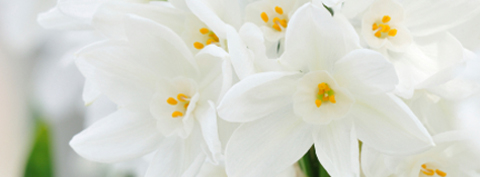 Paperwhites are easy to grow, brightening any room.
Paperwhites are easy to grow, brightening any room.
Daffodils (narcissus, jonquils): Another fragrant bloom with cheerful white or yellow flowers on tall green stems, the daffodil symbolizes new beginnings and rebirth. Synonymous with spring, they’re the birth month flower for March. Their delicate stems often need support – take advantage of the opportunity to create a woodland look with pussy willows, an exotic look with bamboo stakes or chopsticks, or a cottage look with twisted branches and raffia.
Easter Lilies: White lilies have long symbolized purity and chastity, making them a traditional Easter flower as well as a popular choice for weddings and birthdays. Fragrant and alluring Easter lilies are indispensible for the holidays.
Hyacinth: The most fragrant of all the spring bulbs, a single potted hyacinth will perfume an entire room. Whether pre-planted in pots or forced in glass vases, hyacinth are a winter pick-me-up no one should be without. Depending on the container, these tightly packed stems of white, pink, or blue flowers can be carefree and casual or elegant and sophisticated.
Tulips: Few flowers can match the color palette of tulips. Their solids, variegated, and multi-color blooms cover the spectrum from white, yellow, and green to orange, scarlet, and purple in soft pastels and vibrant saturated hues. Flower types are equally diverse, including petal, parrot, fringed, double flowering, multi-flowering, and lily flowering.
Primrose: These enchanting flowers are another spring favorite that pair perfectly with indoor spring bulbs. It’s easy to see why they symbolize the sentiment “I can’t live without you”.
Forcing Bulbs
Another alternative for bringing spring color to drab winter days is to try your hand at forcing bulbs. Forcing simply means compressing their natural cycle of chilling and warming to encourage early blooming. By accelerating their chilly nap and waking them up early we can stimulate them to bloom indoors at a time when they should still be sleeping.
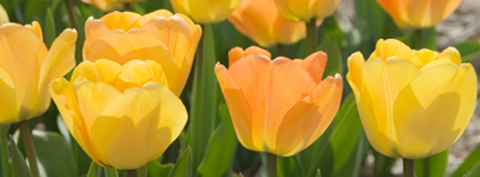 There's no better way to welcome spring than with cheery yellow tulips.
There's no better way to welcome spring than with cheery yellow tulips.
The easiest bulbs to force are paperwhites and amaryllis. These bulbs are native to warm climates so they don’t need to be chilled before flowering. Simply pick up some bulbs at the supermarket or garden center and plant them in your favorite container with the top third of the bulb above the soil line, then watch the magic happen. Paperwhites can even be grown in a container of water filled with pebbles to hold the bulbs in place.
For the more ambitious and patient among us forcing crocus, hyacinth, snow drops, or tulips is a rewarding winter pastime. There are two methods for forcing bulbs, one using soil and the other using water.
Both methods require bulbs of good size and quality. Neither method requires great expense. Any container will do as long as it is clean and in good condition. Use whatever suits your decorating style and budget from mason jars, cans, or mismatched teacups to crystal vases and specialty containers.
Getting Started
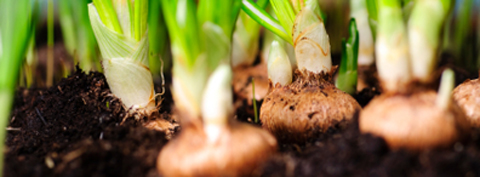 Tiny Crocus bulbs grow easily and can be planted outdoors when blooms fade.
Tiny Crocus bulbs grow easily and can be planted outdoors when blooms fade.
Whether forcing bulbs in soil or water, they’ll need a chilling period to help their roots form. To save time, look for bulbs that are pre-chilled and ready to go. If these aren’t available, you’ll need to chill the bulbs after planting.
Chilling Bulbs
Store them at 40 to 50 degrees Fahrenheit for eight to sixteen weeks in an unheated garage or attic or in the refrigerator. Be sure to pick a spot where they won’t freeze!
Different bulbs require different chill times (see Sidebar for details). Once you start chilling, mark your calendar as a reminder to start checking bulbs at the short end of the chilling times. It’s OK to chill bulbs longer than recommended, but not shorter or you will be disappointed with stunted blooms.
When you have a 2 -3 inch shoot at the top, the bulbs are ready to warm. They’ll grow quickly and flower in two to four weeks (see Sidebar for details). When buds form, move them to a sunny spot. Once flowers emerge, move them away from direct sunlight to extend the bloom time.
Soil Method
Look for containers that are twice as deep as the height of the bulb and have at least one drainage hole. Bulbs look best when they are tightly packed so place as many bulbs in the pot as will fit without touching each other.
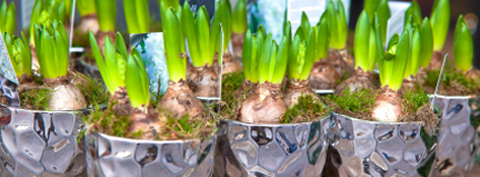 Hyacinth can be casual or dramatic depending on the container.
Hyacinth can be casual or dramatic depending on the container.
Since different plants require different chilling times, plant one type of bulb in each container. You should be able to snuggle 15 small bulbs such as crocus or hyacinth, 6 tulips, or 3 daffodils in a six-inch container.
Cover the bulbs with potting mix, leaving the tips uncovered. Water and cover loosely with a paper bag. Place in a Styrofoam cooler before chilling and chill as described above. Keep the soil damp throughout the chilling period.
Water Method
Crocus, hyacinth, and daffodils can be forced in water alone. A bulb vase or shallow watertight container works best. Fill the container with stones or pebbles then add water until it just reaches the base of the bulbs and keep it at this level by adding water as needed. Chill the bulbs as described above.

